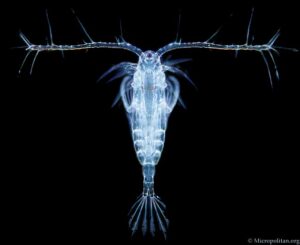We are supporting research that will determine how future increases in temperature and ocean acidity will affect harmful algal bloom species (HABs) and their grazers.

Why We Care
Climate change may have effects on single species of HABs through altered growth rates or timing of blooms as well as altered algal toxicity. However, these algae live in the context of an estuarine food web and not in isolation. Examining single variables (temperature or acidification) on isolated species without considering the species that eat the algae and how toxins flow through a food web will not adequately portray the extent of climate change impacts on complex biological communities.
What We Are Doing
The goals of this project are to investigate the effects of climate change on HAB species and the consequences of altered toxicity and nutritional quality of HAB species on their grazers. Researchers led by Dr. Mark Warner at the University of Delaware are studying how different HAB species react to the interactive effects of temperature and CO2 under both high and low nutrient scenarios. Small estuarine animals called copepods will be fed algae cultured under these conditions, and their ability to eat, grow and reproduce will be compared for target HAB species vs. non-harmful species cultured under the same conditions. Results of this project will lead to a better understanding of how changes in growth, toxicity and nutritional quality of HAB species will impact species interactions and food webs in coastal ecosystems of the future.

The NCCOS Ecology and Oceanography of Harmful Algal Blooms (ECOHAB) Program is providing funding for the project.
Benefits of Our Work
A major environmental issue for the Delaware inland bays is the proliferation of harmful algal bloom species. The primary outcome of this project will be to provide management in the mid-Atlantic region with information that will aid in the development of management strategies for HABs under future conditions. Fundamental knowledge about the direct and indirect effects of climate change on community structure can be used to assess potential ecosystem-wide impacts (such as effects on local fisheries) of harmful algal blooms. End users of this information include the Center for the Inland Bays (CIB) and the Inland Bays Citizen Monitoring Group (CMG) and the Delaware Department of Natural Resources and Environmental Control (DNREC).
